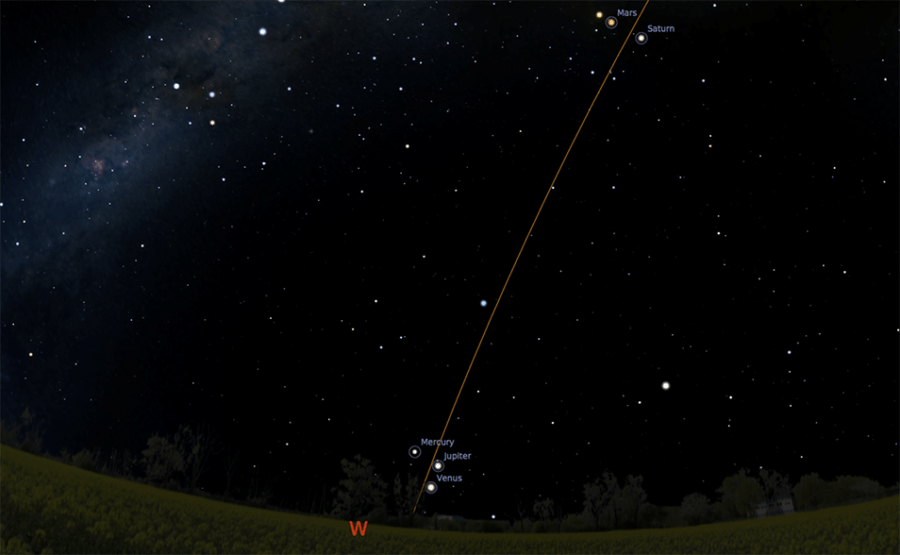The planets are about to align (again!)

IF YOU MISSED the alignment in January and February, throughout August all five visible planets – Mercury, Venus, Mars, Jupiter and Saturn – will sit in a bright and bold line across the sky, visible to the naked eye. No waking up early this time either, as the planets will be visible from sundown.
Although the planets have aligned once before this year, it’s not a common sight – prior to January, the last alignment was in 2005, and your next chance isn’t until October 2018.
Dr Alan Duffy, research fellow at Swinburne University in Melbourne, explains that the somewhat rare phenomenon is a strange – and pretty – moment in time. All the planets exist on a flat plane (“like an old vinyl record with the Sun in the centre and [each] planet going along on a groove”) but have different yearly cycles, so the line-up is something special, says Alan.
Although colloquially this is known as an alignment, Alan points out that in the strict astronomical sense of the word, an alignment is where three objects appear to overlap in a straight line of sight, as with an eclipse.
If you live in the northern region of Australia, the alignment will be viewable from the start of August, while southern Australia will have to wait until the weekend of 12 August.
Jupiter, Saturn and Mars will be easy to spot throughout the alignment – Saturn should shine almost directly overhead after sunset for most Australians.
Dates and locations
“But the visible set of five, that’s the challenge,” says Alan.
Venus and Mercury will trace away from the Sun throughout the middle of August, meaning they’ll be hard to see. A full Moon will also interfere around that time, its glow taking centre stage in the sky.
Alan recommends sundown on Sunday 21 August as the ideal date to spot all five planets at once, with no Moon light to wash out the fainter planets.
The biggest challenge is an unobstructed view, clear of buildings, hills, or even low trees. Alan says that Venus races after the setting sun, so the planet will only be about 10 degrees above the horizon. So long as you find a dark sky and a flat horizon, though, you’ll be in for a show.
“For those attentive sky viewers, you’ll really see a dance of the planets as Jupiter, Venus and Mercury switch places,” says Alan.
Tips
- The alignment will be visible globally to the naked eye from throughout August, come sundown.
- Depending on where you are, the tilt of the alignment will shift – the closer to the equator, the closer the planets will rise directly vertical from the horizon, while in New York, for example, the planets will be tilted diagonally closer to the horizon.
- Find a flat plane and a dark, unobstructed view of the sky.
- Hold your arm outstretched towards the horizon. That’s roughly 10 degrees, where Venus will sit for much of Australia.
- If you don’t succeed, try again! The alignment is visible for a month.
RELATED:
- Top 10 Aussie space milestones
- The number of known planets just doubled
- Demoting Pluto as a planet
- Australia’s first Dark-Sky Park named
Correction: This article was previously incorrectly illustrated with an image from January 2016.

